I caught up recently in sunny Buenos Aires, Argentina with Bridget McCutchen and her riding partner, Kiva Carman-Frank, for a chat about Bridget’s ongoing mission to be the youngest woman to ride around the world by motorcycle. She’s currently 22 years old.
To travel “around the world” by motorcycle is a difficult enough challenge even if things go well. At a minimum, it means riding for many hours a day, navigating difficult borders, and a lot of daily schlepping (packing, unpacking, cleaning, and maintaining).
But anyone who’s travelled distance on / in any vehicle will know that things don’t always go well — especially if you’re trying to do it on a budget and going solo. There’s the daily challenge of finding a place to sleep, a route to take, and all the logistics of each country, including visas, currencies, and language.
And then there’s the things that can go wrong: equipment failures, accidents, injuries, and even occasional crime.
Bridget has already experienced all of these things — and all on the American continent (but by the time of publication, she’s already in Europe). There’s much too much in her story to put down in just one article, but here are a few of the highlights so far.
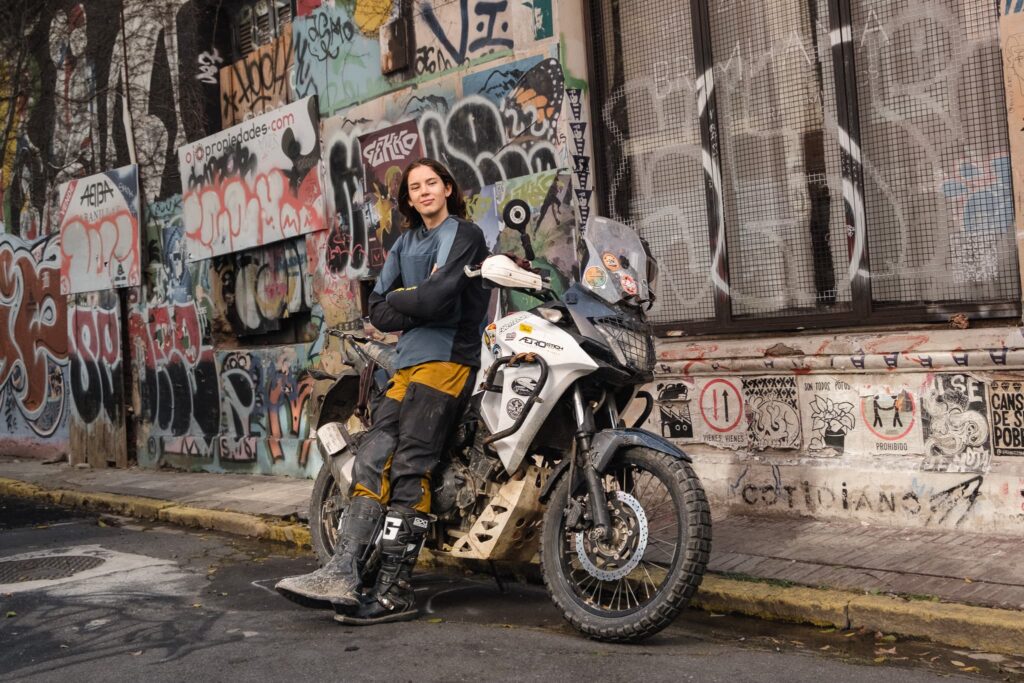
Are you obsessed with motorcycles?
Well, I am. That’s why I created this site — as an outlet. I love learning and sharing what others might find useful. If you like what you read here, and you’re a fraction as obsessed as I am, you might like to know when I’ve published more. (Check the latest for an idea of what you’ll see.)
The Mission
“I had never even left the US before,” was one of the first things Bridget told me when we met. She’s probably aware by this point of how that sounds to others. But I got the impression that it even surprises herself.
To circumnavigate the world and meet the Guinness World Records definition, you have to meet a few criteria, including travelling a certain distance (equivalent to the circumference of the earth), travel in one general direction but start and finish at the same point, and reach two antipodes (polar opposites of the planet).
Doing all this is a challenge on any land-based vehicle, as to reach two antipodean points, you’ll have to freight your bike somewhere! That’s how we met — in Buenos Aires, Bridget’s shipping port from which she was freighting her bike to Spain.
There are other criteria too for a record-breaking trip too, like not stopping for too long in any one place. It sounds reasonable on paper. But then when things start to go wrong — like, if you’re hit by a car, as Bridget was on one unfortunate day — then you realise how difficult it can be to always keep moving.
Just how much has to go wrong for you to give up your mission? It was a question they asked themselves when in Chile… but we’ll get to that in a moment.
The Partnership — Bridget and Kiva
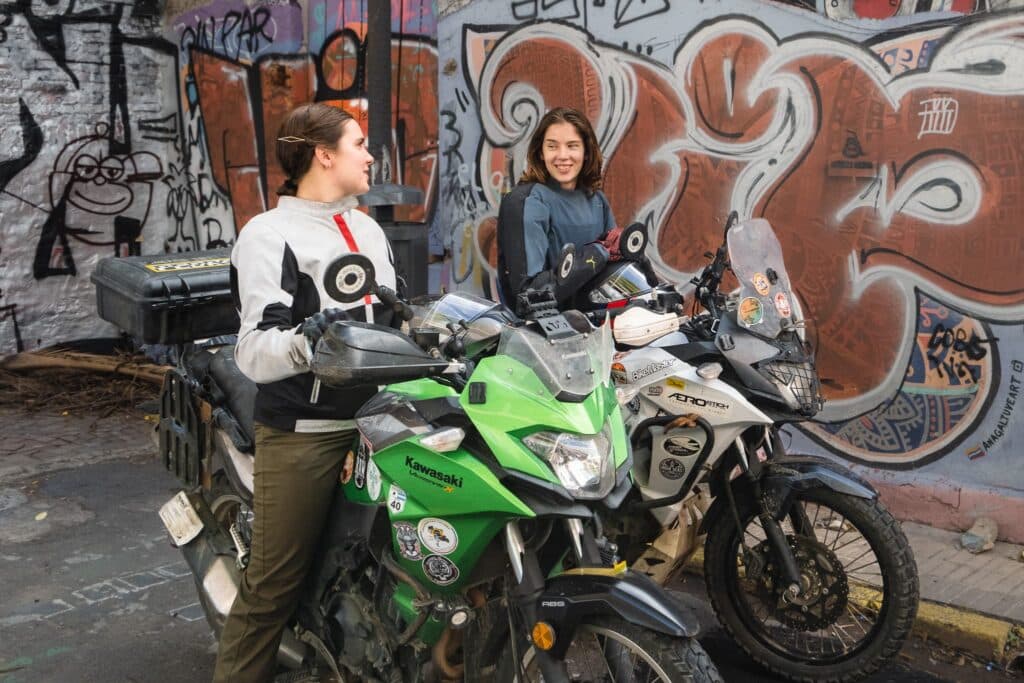
One of the criteria for circumnavigation is that it be done solo. But that doesn’t preclude you from having travel buddies along the way.
Before meeting Bridget, I didn’t know about her riding partner, Kiva. It turns out that they had only met a few months prior to starting the trip. Kiva was at a local market, and met Bridget’s mother by chance, who had said “My daughter is travelling around the world on motorcycle and is looking for female riding companions!” Which Bridget actually wasn’t. But when Bridget and Kiva met up (on a boat where Bridget was working), they hit it off and started planning together.
Bridget and Kiva complement each other quite well. “I’m secretly an introvert,” Bridget volunteers, “But Kiva’s an extrovert.” Which is a good thing, because Kiva’s also Bridget’s manager now — managing her correspondence, partnerships, and marketing efforts. (Turns out that when I was emailing them, I might have been emailing either one of them.)
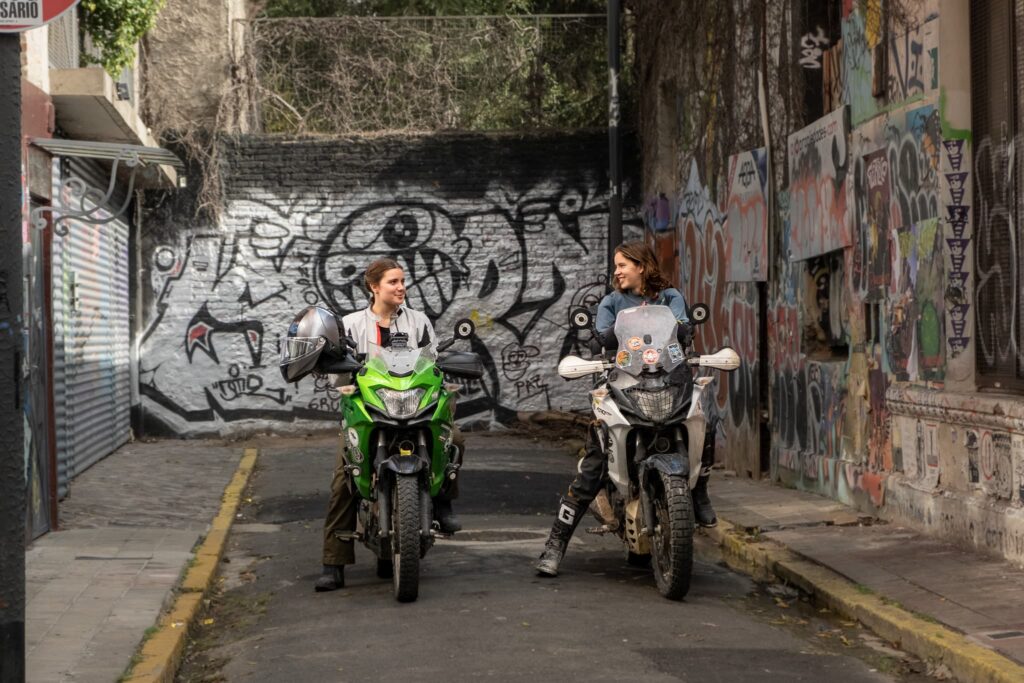
While Bridget is the “star” according to Kiva, Kiva also brings a lot to the table, speaking Spanish and “a quarter Russian” (which, for a notoriously difficult language, is an impressive amount), and organisational and planning skills.
They both seem completely in their elements, with machines that have already seen some hard times, and which are covered in adventure riding gear, stickers, battle scars, and sometimes stickers doing double duty repairing those scars. So it probably would surprise most people to learn that Kiva only learned to ride (taking the MSF course) shortly before they set off together!
At first, not really knowing how things would go, Kiva only committed to keeping Bridget company through Mexico. “Maybe I’ll make it to Baja [California],” she offered. Regardless, everyone else assumed that the duo was going to “tour South America” together, and that’s what other people would say. So it seems their fate to make it to the bottom-most point of South America was set from the outset.
And so they did. They’ve so far crossed through many Central American and South American countries together and have had ups and some quite impressive downs together.
They parted ways in Buenos Aires, but they’ll meet again at a later point. It’s a shame Kiva won’t be able to put her “quarter Russian” to use in areas where it’s spoken.
The Upsides
Before getting into the challenges of circumnavigating the world, let’s start with the obvious upsides!
They’ve already been to a huge number of Latin American countries, more than most people, even the more well-travelled among us.
The question on the tip of every motorcyclist’s tongue is: What are the best roads they’ve been on?
“Chile and Argentina have really nice roads,” they both offered. “But the road that was the most fun was that mountain road in Peru.”
They were talking about the 106 in the Huascarán National Park in Peru. This is a mountain valley pass that goes through lagunas with “crystal blue water on both sides of the road”, as they recalled.
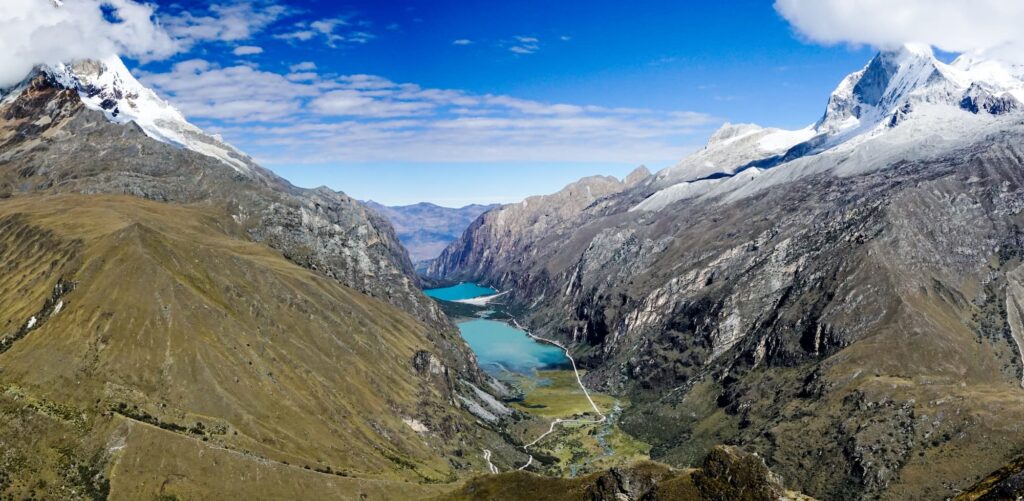
Apart from views, that was a crazy day. Bridget loved it despite the fact that she crashed on that day. “At every single turn, there were fantastic mountains. I can’t recommend Peru enough.”
They weren’t always together on that road. Bridget chose some more off-road sections to take. The second day, she said, was the best. “It was technical enough where I could be challenged and enjoy it, but not feel like I was going to die.”
“Bolivia was also really beautiful. But it was all the same: Super flat, with giant mountains.” Nice problems to have.
Aside from the views, Bridget and Kiva have had plenty of unorthodox adventures. Bridget has kept her eye out for animals trapped in fences, helping them where she can (like in this Instagram post). And they’ve managed to make new friends and meet old friends along the way.
Another question people often have is: How do they afford this? Are they loaded?
Well, no. Adventures come in many forms. For Bridget and Kiva, it means a lot of camping.
“We free camp as much as we can,” Bridget explained. “I love camping!”
They have a full suite of camping gear. It’s not highly specialised motorcycle camping gear — just camping gear they already had.
And they’ve been through a few bits of gear along the way. Luckily, sponsors love what Bridget’s doing. They’ve received luggage from Mosko Moto, helmets and other riding gear from Dainese, and other gear from Tucker Powersports, as well as from others. Gear can get expensive, so it goes a long way.
The Tougher Bits
Aside from stunning views and fun roads, there have been plenty of tough bits of their adventures already.
What’s amazing is that in just the (large) American leg of their journey, Bridget and Kiva have dealt with a number of mishaps: Accidents, injuries, theft, equipment failures, and some “sketchy situations”. And they’ve survived so far, and kept going.
Central American borders were difficult to navigate — they had delays of up to six hours. Luckily, this trend didn’t continue in South America, where Kiva said “the most we ever got held up was a couple of hours.”
On a road called “Trampolín del Diablo” (“The Devil’s Trampoline”) in Colombia (also known as “El Trampolín de la Muerte“), a road notorious for accidents, they had one of their own.
They were riding down a one-way dirt downhill road with a cliff face on one side and a cliff wall on the other. Then Kiva’s bike went down.
“It was a scary situation. It’s a dangerous road,” Bridget said. There was a lot of traffic on the narrow road and they were around a blind corner. So Bridget rushed to help pick up the bike and get it on its kickstand — a little too eagerly.
“I heard three pops. I completely threw my back out.”
That wasn’t even the end of her injuries. Bridget crashed in Peru, hurting her knee, and in Santiago was hit by a car — but more on that later. Kiva explained that Bridget doesn’t ever fully heal — she just gets fresh injuries that demand more immediate attention!
Sketchy Situations
Aside from actual injuries, they’ve also been in sketchy situations.
Interestingly, they’ve experienced more sketchiness when travelling with men — though not from them directly.
“We’ve travelled with men three times.” Alone, they were left alone, they said, with at most someone yelling “You are beautiful!”. “But with men, random people would come up to us and try to sell us drugs all the time.”
In Mexico City, they wanted to stay in the Centro Histórico. “But it turned out not to be the best neighbourhood.”
One time they were walking through a market, but thought they were being followed, so stopped. And sure enough, a woman came up and told them (in Spanish): “You are being FOLLOWED!”
They’ve also had some near misses. In Costa Rica, they were stranded in rain without a camping spot, so asked a restaurant owner if they could sleep in his restaurant. He acquiesced, but it turned out that they were sleeping right next to where the man was sleeping. It turned out fine, but felt weird, and they realised that they should make sure that didn’t happen again.
Actually, both Bridget and Kiva agreed that they normally felt much safer camping in the middle of nowhere than in big cities. “When we’re out remote, we’re a lot safer than in any city.”
Of course, sometimes when leaving a tent, they’d arm themselves… “We were on a remote road, called El Espinazo del Diablo” (“The Devil’s Backbone”), a really beautiful road in the north of Mexico. We found a wild camp spot on the side of the road.” At one point, as she was leaving the tent, Bridget picked up a machete they had. “Bridget, what are you doing?”, asked Kiva. Bridget replied: “I’m going outside!”
Overall, things went relatively smoothly. Bridget and Kiva have been travelling with US dollars, and they recognised the advantage of this currency, as well as the value of their passports.
“Everybody tells you not to change money at the borders as they’ll scam you blind,” they said. “But only once has it gone poorly — and that’s because I was distracted and didn’t do the math right!”
“I bought a sim card in a bathroom at a border,” Kiva admitted. “That didn’t work. That’s probably the worst thing that happened at a border!” she joked.
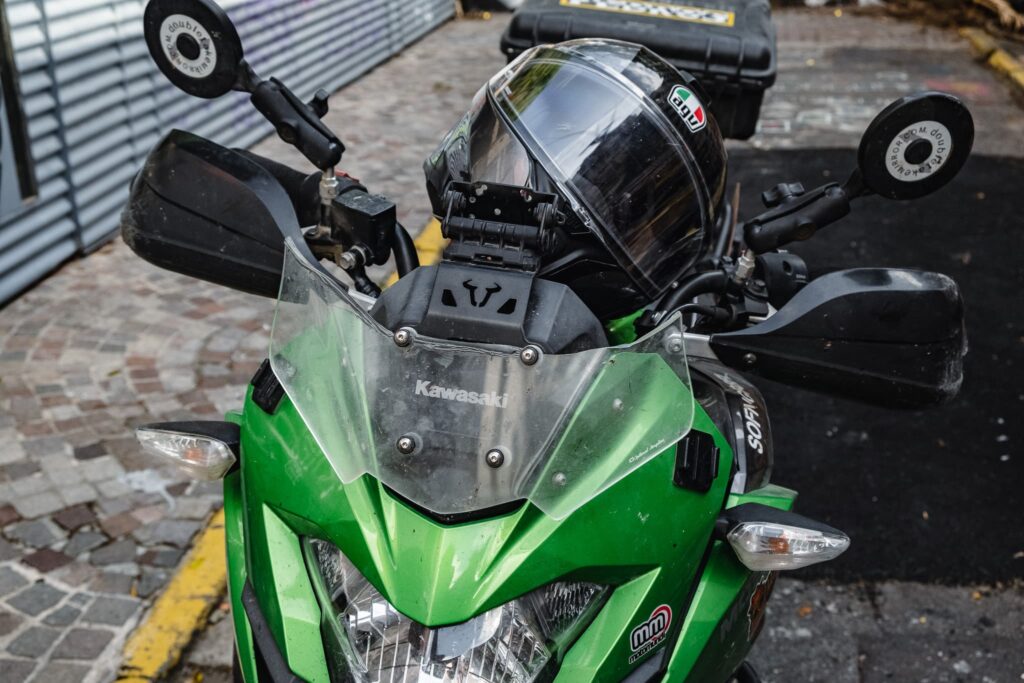
The Week from Hell
The story of what they call “The Week from Hell” started with Kiva’s chain.
“I’ve had a lot of problems with my chain,” said Kiva. “The first time that my chain broke was in Peru, at sunset.” It was the same day that Bridget had crashed, so that day was already not going well.
“So we were stuck where we were. We ended up staying in this woman’s house on the side of the road.”
Their gracious hosts fed them dinner, too. “It was oatmeal!” exclaimed Kiva.
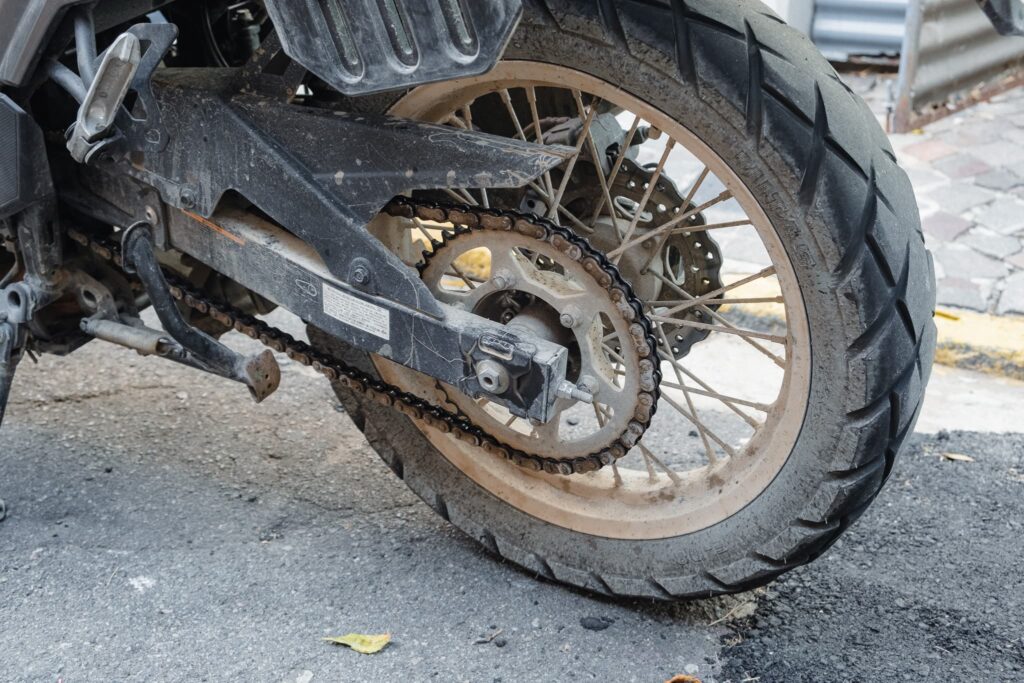
They got the chain fixed, though not adequately. Soon afterwards, when they were crossing the Atacama desert in Chile, Kiva’s chain broke again. The chain locked up — luckily while they were going slowly, off-road, so there was no crash.
“She didn’t crash when her chain locked up in the desert. But she did crash when she turned around to chase an armadillo,” Bridget joked.
Bridget hung out in the desert during the day while Kiva took Bridget’s bike to fetch a new chain. Bridget, trying to escape the sun, strung up whatever she could for shelter.
“I came back and Bridget was sunburnt out of her mind,” said Kiva. “But her first words were: ‘Do you have food?'”
The next day, they made it to Calama, a city in the north of Chile, where they went shopping in a “nice” grocery store. It was noon on a Saturday — with a bunch of people around. So they went in and shopped for some 30-40 minutes. Bridget came out early, and noticed something was wrong.
“Kiva, did you take your bags off?” she asked Kiva. “No,” Kiva replied. “Well then… someone stole them.”
That was the moment when Bridget noticed Kiva’s “brain break”.
You might be used to locking stuff up on your bike. But adventure riders out in Latin America (and elsewhere off the beaten track) rarely lock everything up. Not everything can be secured easily. Everything’s dirty and not appealing-looking. Besides, nobody else does it. “No-one I met had any kind of security,” said Bridget.
Unfortunately, thieves had taken all of Kiva’s gear, and one bag off Bridget’s bike. Even that one bag was annoying, as it had some important record-keeping information for the Guiness world record attempt, a nice camera, and some earrings with personal value.
They set out to buy new things for Kiva. The value of everything was around $5,000. Bridget started a GoFundMe.
But a woman from Minnesota, after she heard about the theft, contacted Bridget on Facebook. She said she was coming to Santiago in ten days with her friends from the Women’s International Motorcycle Association to do a motorcycle tour of the Carretera Austral, and volunteered to bring basically all of their replacement gear, including new parts from Tucker Powersports and lots of of Mosko Moto luggage. Aside from being very helpful, this solved Kiva’s and Bridget’s problem of import customs, which might have held up the replacements. So it was huge for them.
But unfortunately, their travails were not over. To cap it off, after an accident, two chain failures, and theft of their belongings, in Santiago, Bridget was hit by a car. She was wearing her helmet, but not all her gear. She suffered a concussion, damage to the bike, and had bruises for weeks later.
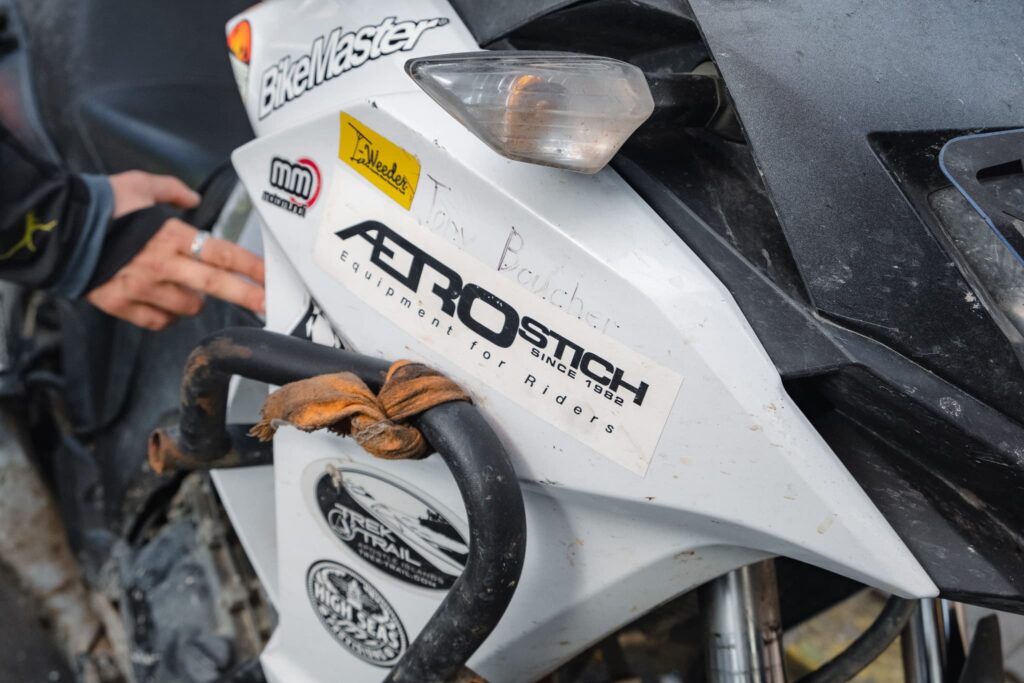
It was nearly too much. “We were nearly done in Santiago,” Bridget said. While she wasn’t close to quitting, Santiago was the first time she hesitated.
How they kept still going is what really intrigued me. It seems that any one of the mishaps they had might have really derailed them, especially as the rules state you can’t stay in any one place for more than two weeks.
According to Kiva, the trip might really have been derailed “if Bridget were less tough.”
“It’s not like we waited ’till she was healed up to get going again. It still really hurt, but we just kept going.”
The Machines — The Kawasaki Versys-X 300 (and some modifications)
While the people are the star of this story, I’ll just make a brief mention of their steeds of choice, because I think it’s interesting. People travel around the world on all kinds of rigs, for various reasons.
Unbelievably, some people don’t go round the world on a BMW R 1250 GS Adventure that’s decked to the nines!
The question of “the right bike” for a round-the-world trip is, if you ask the wrong person, a more toxic one than the “best oil”. But generally speaking, many people do tend to converge on a few common things being reasonable, logical things to opt for: lightness, simplicity, and reliability.
Bridget chose a Kawasaki Versys-X 300, and so did Kiva to accompany her. The Versys-X is frequently considered a “beginner’s bike”, but there’s a lot that’s special about it. It has a really useful amount of power for most of the world’s roads, it’s reasonably light weight, affordable, cheap to fix, and very reliable. So it’s a sensible choice for the trip.
So far, they’ve travelled over 24000 miles / 40000 km on the Versys-X, and all they’ve done is oil changes, tyre changes, and chain / sprocket maintenance. I think it’s due for a major service and valve inspection, come to think of it. But they say they haven’t had to crack the cylinder heads yet.
The Versys-X is based on the Kawasaki Ninja 300’s 296 cc parallel twin engine. It’s a revvy, sporty engine, but in the Versys-X it’s geared a little lower, with four more teeth on the rear sprocket compared to the Ninja 300 or Z300 (46 vs 42). The rear tire is also different, but the circumference is roughly the same, so it’s mostly the sprocket that makes up the gearing difference.
See my guide to motorcycle gearing for more.
The result of the gearing difference is that while the Versys-X is easier at low-speeds, it can rev a little high at higher speeds. For example, at 65 mph / 110 km/h, it’s doing around 8000 rpm.
But these aren’t the United States’ highways they’re riding down. Even regular roads are often dirt roads when travelling in some parts of the world. “You really have no need to ride more than 80 [miles per hour],” Bridget said.
The Versys-X is a comfortable bike, with wide handlebars and an upright seating position. It has wire spoke rims front and rear with tube tires, which means that road-side repairs are more difficult for small jobs as you can’t just use plugs, but easier for big ones as you can replace an inner tube before a whole tire is worn out.
How has the trip changed them?
Both Bridget and Kiva are young. That’s the point of Bridget’s goal! So I was intrigued to know how this trip, with so much experience in such a short period of time, had changed their perspectives of what they wanted to do in their lives.
Bridget grew up on a farm. She didn’t travel when she was younger. But then she started doing Sea Scouts and sailing, and went and worked on a tall ship in Washington, and realised: “I can travel?? Why did nobody tell me this?”
Bridget explained: “People tell you that you can do anything. But then when you try to do something… it changes you.”
“Each time I do more than I thought I could, I’m like: Well, what can I do now?”
So her horizons are broadening further. She wants to go on a big boat trip in three years. “I want to get my captain’s licence. I want to get my pilot’s licence. I want to become a more technical off-road rider. There’s just so many things I want to do. So I had better hurry up… while my body can still take it!” She’s already feeling the bruises…
Where to next?
The ironic thing is that Bridget has already travelled the requisite 24,000 miles just in the American continent. She still does have to meet a few other criteria to have successfully circumnavigated the world, though, like to cross through two antipodean points, and to make it home. Besides, there are many more things to see.
Bridget is shipping her motorcycle from Buenos Aires to Spain. For those interested, this massive trip is costing US$2,200. Not small change, but also much less than the $7,000 she had budgeted.
In Europe, Bridget says she’ll do a complicated route up and down. “It looks like someone through spaghetti on a map,” she said, describing the zig-zagging through Spain, the west of France, England, Ireland, Northern Ireland, Scotland, the Netherlands, Denmark, Norway, Sweden… Well, you get the idea.
Then through the north of Italy and “unspecified countries” between Europe and Central Asia. Initially, they were considering Iran and Russia. But Russia presents its own geopolitical challenges, obviously, though they considered it because “Well, it was either that, or Iran…”
She didn’t even rule out Iran entirely, but the main deciding factor, in the end, was getting a carnet de passage for Iran, which would have cost several times the value of the bike, plus a ~$1,000/day fee for a guide. Therefore, she’s finding other routes through Central and Southeast Asia.
And how does Bridget choose where to go?
Some of it is places to see, some of it is friends… “We posted a route, and a friend said ‘You have to see more of Norway!'”. So she’s going to Norway.
But Bridget has maybe less than six months left. “I’m hoping to be done with by the end of September,” Bridget said. There’s a lot more to cover until then.
Get in Touch
If you want to support Bridget’s journey, her website / blog is here. And if you want to see some of the more up-to-date stuff, find Bridget’s Instagram here. She tends to post more stories than posts. Kiva also regularly posts on her own Instagram.
And if this inspires you to go on an adventure of your own — let me know bellow in comments.

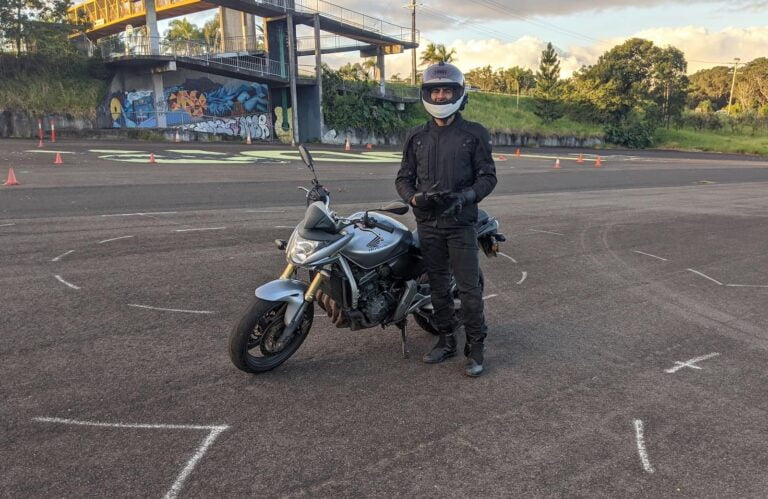

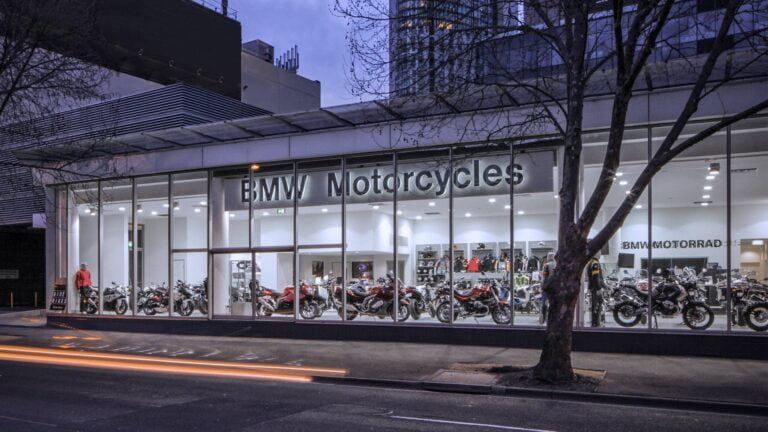

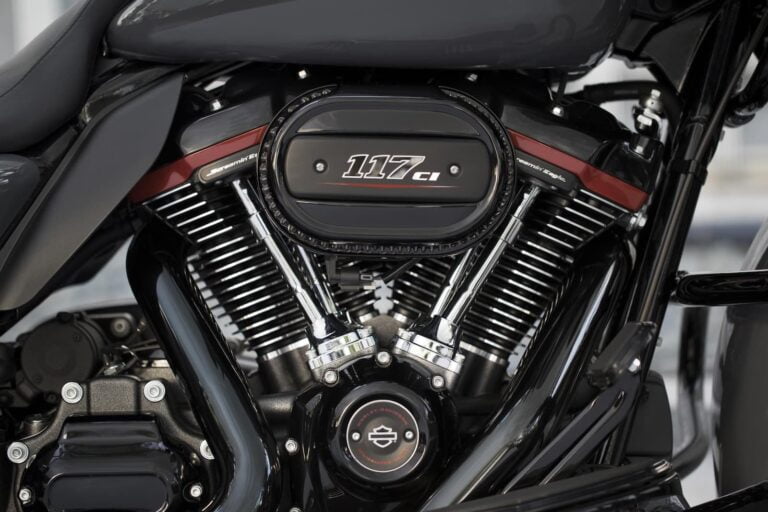

Great article sir. Most complete story yet on Bridget and Kiva. Great to see Kiva get her due.
Thanks Jeff. As I mentioned to you in private, so touching to see the support she gets from her family!
Great writing Dana, thank you!
Thank you Randy!